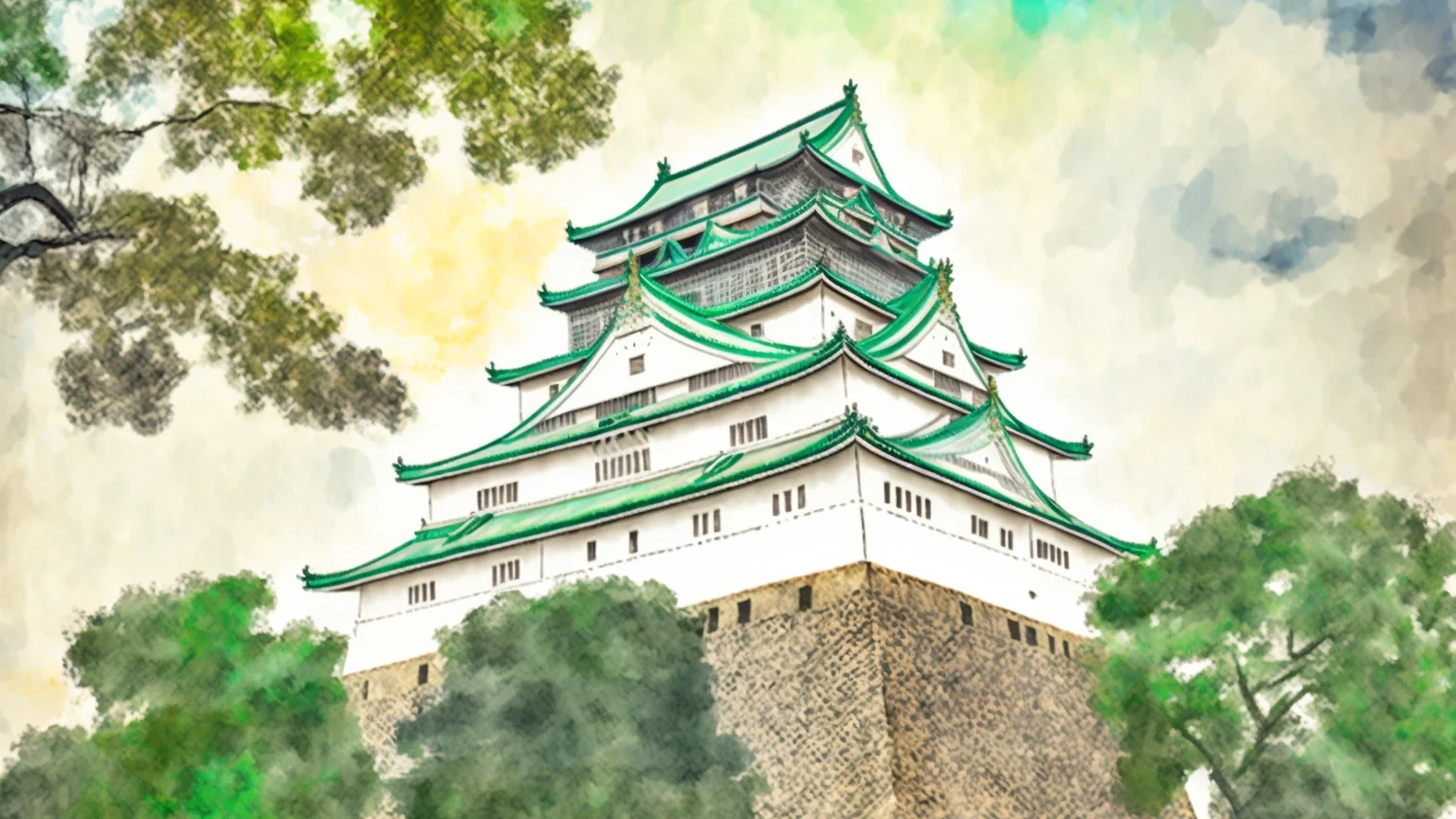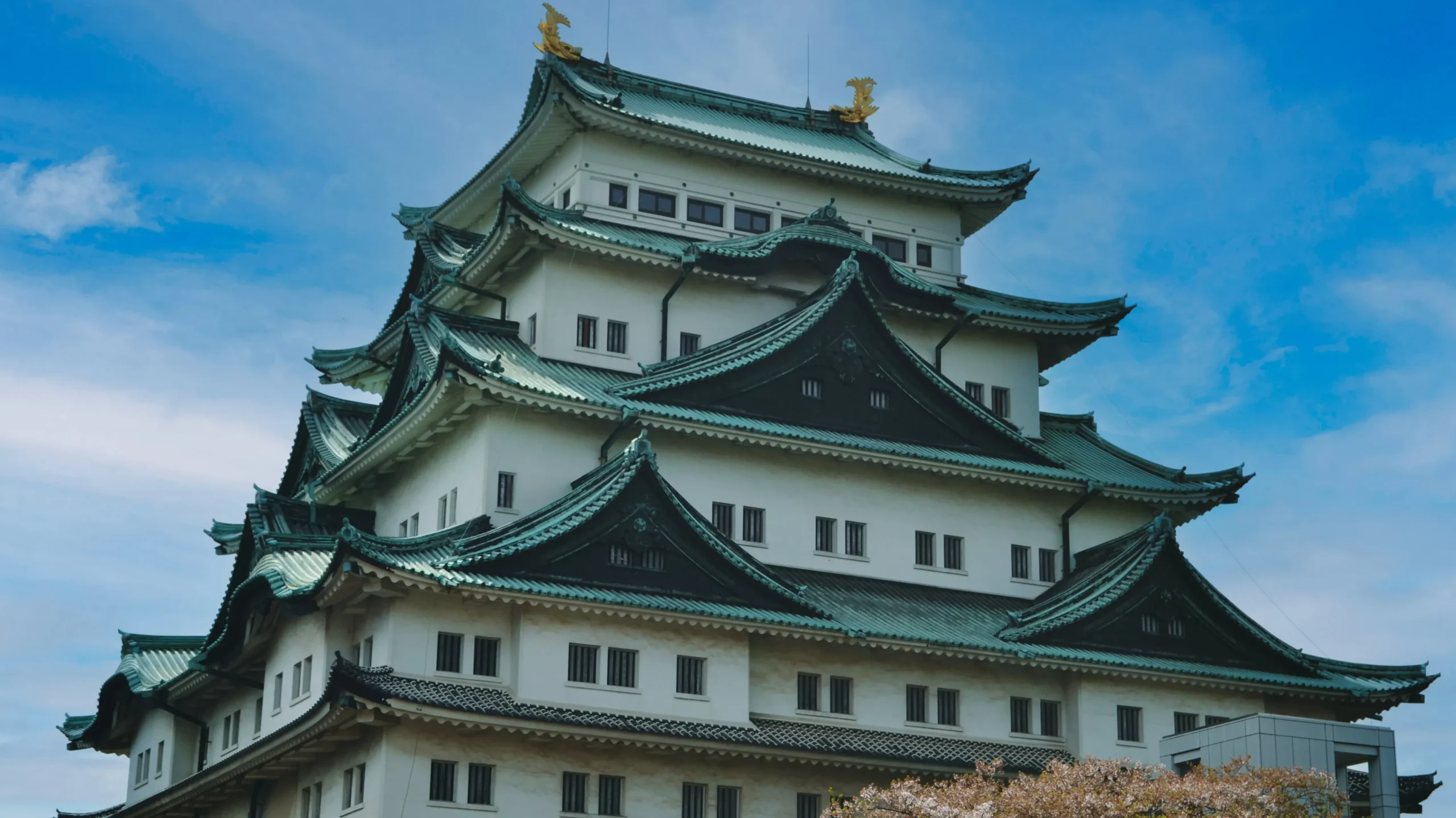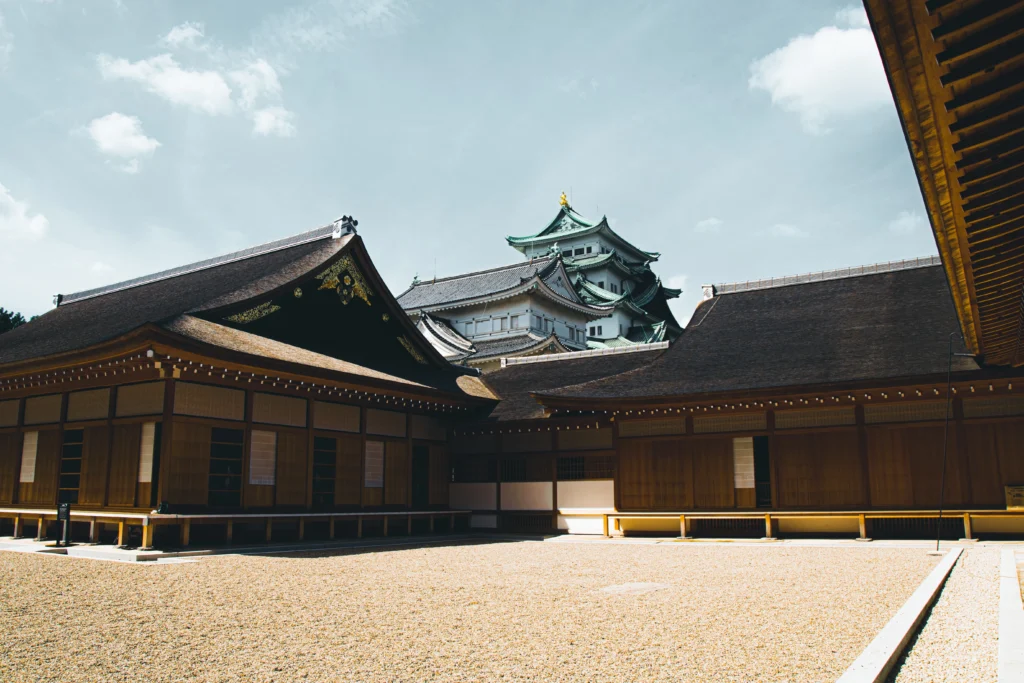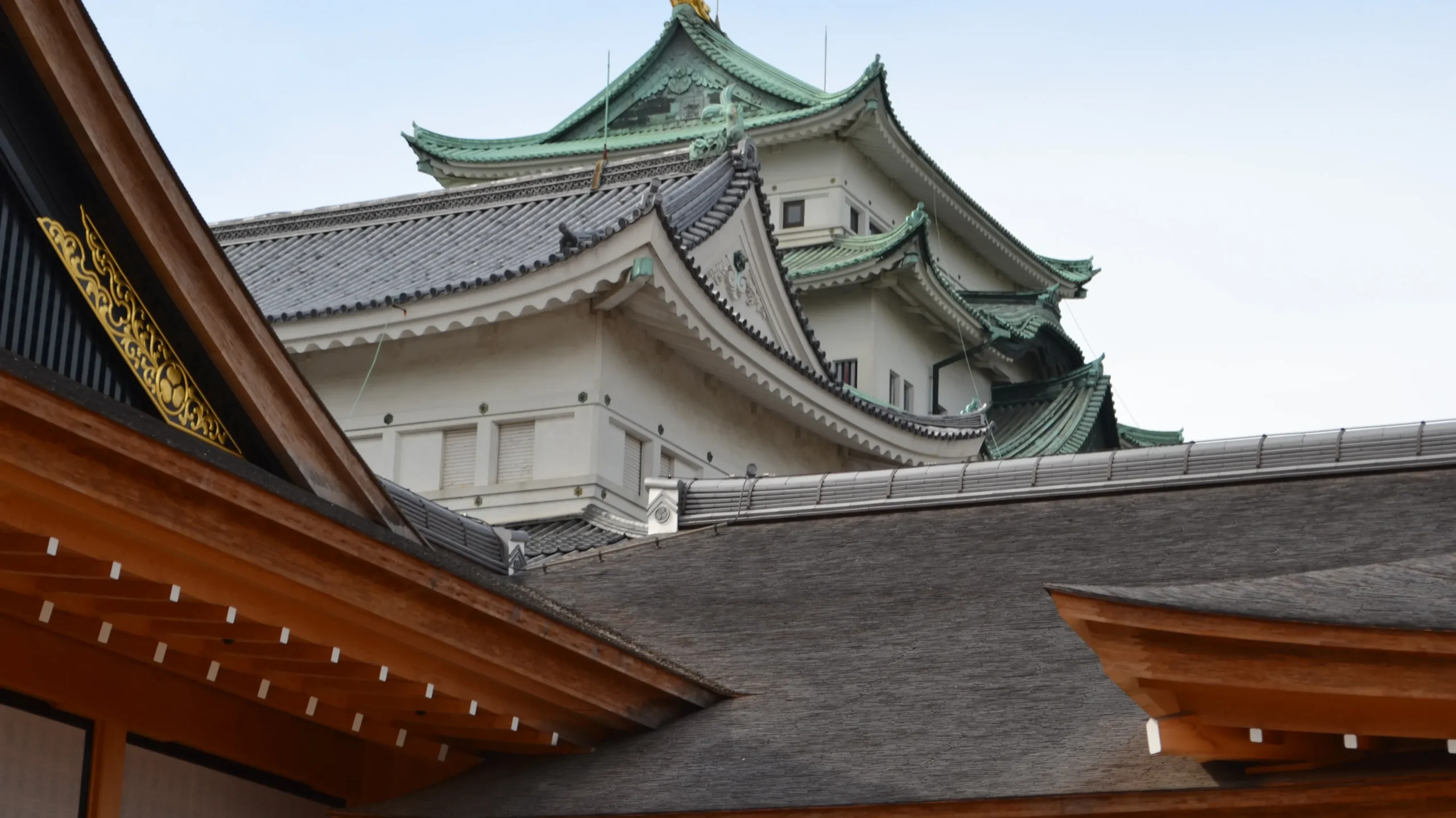
In the heart of the bustling city of Nagoya lies a beacon of historical significance, a symbol of a rich and proud heritage: Nagoya Castle. For centuries, this magnificent structure has stood as a testament to the city’s resilient spirit, having survived war, natural disasters, and the passage of time itself.
The Legacy of Feudal Japan
Nestled among the skyscrapers and neon lights, Nagoya Castle serves as a powerful reminder of the city’s place in Japan’s feudal history. Built in the early 17th century, the castle was the seat of power for the Owari branch of the Tokugawa Clan, one of the three branches of the powerful Tokugawa family that ruled Japan during the Edo period.
Today, Nagoya Castle is a beloved landmark and popular tourist destination, offering visitors a unique glimpse into the history and culture of Feudal Japan. Whether you’re a history buff, an architecture enthusiast, or simply someone looking to experience a piece of Japan’s rich cultural heritage, Nagoya Castle is a must-visit destination.

Nagoya Castle is a symbol of the city’s rich history, dating back to the 17th century when it was first built by one of Japan’s most powerful feudal lords, Tokugawa Ieyasu. Over the centuries, the castle has undergone several renovations and expansions, with its current iteration completed in 1959, after being destroyed in World War II. Despite its modern reconstruction, the castle remains true to its original form, preserving its grand entrance gates, elegant turret roofs, and grand halls.
The castle was not only a residence for the ruling lords, but it also served as a center of politics and commerce, playing a crucial role in the development of the region. Today, the castle is a museum, open to the public, showcasing the history and culture of the region, with exhibitions and displays of traditional Japanese armor, weapons, and other cultural artifacts.
Visitors can also enjoy panoramic views of the city from the castle’s observation deck, which provides a stunning view of the city’s sprawling metropolis and its surrounding landscape. Whether you’re a history buff, a culture lover, or simply looking for a unique experience, Nagoya Castle is a must-visit destination for anyone visiting the city.
Nagoya Castle Through Time
Nagoya Castle was first built in the year 1612 by Tokugawa Ieyasu, one of Japan’s most powerful shoguns. He saw the potential of the location as a strategic point for defense and sought to build a castle that would serve as a symbol of his power. The castle was completed in 1615 and became a prominent fortress in Japan’s Edo period, when the country was ruled by shoguns for over 250 years.
Nagoya Castle played a significant role in Japan’s history, serving as a center of politics and military power. During the Edo period, it was one of the largest and most important castles in Japan, but it was destroyed by air raids during World War II. The castle was eventually reconstructed in 1959, but the rebuilding process was slow and costly. Today, the castle stands as a symbol of Nagoya’s rich history and cultural heritage.
Today, Nagoya Castle is a popular tourist destination, attracting visitors from all over the world. The castle is surrounded by beautiful gardens, including a moat and a large park, making it a great place for visitors to relax and enjoy the peaceful atmosphere. In addition, the castle houses a museum dedicated to the history of the Tokugawa dynasty and the city of Nagoya, offering visitors an in-depth look at the city’s rich cultural heritage. The cuisine of Nagoya Japan is also worth mentioning as it is one of the city’s most famous attractions.

Nagoya Castle: A Symbol
Nagoya Castle has stood the test of time, withstanding wars, natural disasters and modernization. It serves as a reminder of the rich history of Japan, and the significant role it played in shaping the country as we know it today. The castle is a tangible link to the past, where visitors can touch the walls, explore the halls and immerse themselves in the history of a bygone era.
Nagoya Castle is not just a historical site, but also a symbol of the city’s cultural heritage. It represents the heritage, identity and values of Nagoya, and is a source of pride for the people of the city. The castle is a cultural icon, and its preservation and maintenance is an important part of preserving the city’s heritage for future generations.
Nagoya Castle provides a unique opportunity for visitors to learn about the history and culture of Japan. It is a place where visitors can gain a deeper understanding of the country’s rich heritage, and the role it played in shaping the nation. Visitors can also learn about the architecture, design and engineering of the castle, and gain a deeper appreciation for the skills and expertise that went into its construction. Whether through guided tours, interactive exhibits or educational programs, Nagoya Castle is a place of learning, where visitors can expand their knowledge and deepen their understanding of Japan’s rich cultural heritage.

Is Nagoya Castle Worth Visiting?
Nagoya Castle may have fallen and risen again, but its history, heritage and influence endure, playing a central role in shaping the cultural identity of Nagoya and contributing to its ongoing growth and prosperity. From the well-preserved castle tower and park grounds, to the city’s thriving industries, arts and cuisine, Nagoya’s past and present are forever intertwined. As a testament to its enduring spirit, Nagoya Castle continues to inspire and captivate visitors from around the world, offering a glimpse into the rich and colorful tapestry of Japan’s history. So whether you’re a local, or a curious traveler, a visit to Nagoya Castle is an opportunity to explore the roots of one of Japan’s most vibrant cities, and to experience the timeless beauty of its cultural and historical legacy.
How far is bullet train from Tokyo to Nagoya?
The Shinkansen, or bullet train, provides a swift and convenient way to travel from Tokyo to Nagoya. The trip covers approximately a distance of 286 km and takes approximately 90-100 minutes, making it an ideal option for those who want to save time on their journey. The trains operate frequently and depart from Tokyo Station, offering seamless travel to one of the largest cities in Japan. With its fast speed and comfortable amenities, the Shinkansen is an essential mode of transportation for anyone visiting Japan and planning to explore both Tokyo and Nagoya.
Is Nagoya near Tokyo or Osaka?
Nagoya is located between Tokyo and Osaka, making it an ideal destination for travelers seeking the perfect balance of bustling city life and peaceful serenity. Whether you prefer the fast-paced atmosphere of Tokyo or the laid-back vibe of Osaka, you can easily visit both cities during your stay in Nagoya, as it is well connected to both by various modes of transportation. With its prime location at the crossroads of Japan’s main island, Honshu, Nagoya provides a unique and convenient gateway to the best of what the country has to offer.

Does Nagoya have a beach?
Nagoya is a city steeped in history and culture, known for its rich heritage, intricate architecture, and delicious cuisine. However, many travelers are unaware of another gem hidden within its borders – the sandy shores and crystal waters of its beaches. In this post, we’ll explore the surprising beauty of Nagoya’s beaches and what makes them a must-visit for any beach-lover.
Yes. Nagoya is home to several stunning beaches that offer endless opportunities for adventure and relaxation. The sound of the crashing waves and the salty scent of the sea provide a perfect backdrop for swimming, sunbathing, and surfing. Whether you’re an experienced surfer or just looking to dip your toes in the water, you’ll find the perfect beach to suit your needs.
Nagoya’s beaches are not only a playground for visitors, but they also provide a home for an array of unique and fascinating wildlife. From the colorful birds that soar overhead to the playful dolphins that swim in the distance, you’ll be able to connect with nature in a way that’s simply not possible in the bustling city.
With its sparkling waters, warm sun, and scenic coastline, Nagoya is the ideal destination for a summer getaway. Whether you’re traveling solo or with friends and family, you’ll find that the beaches of Nagoya offer a perfect escape from the stress and strain of daily life. So pack your bags and head to the coast for a much-needed break in the sun.

Leave a Reply